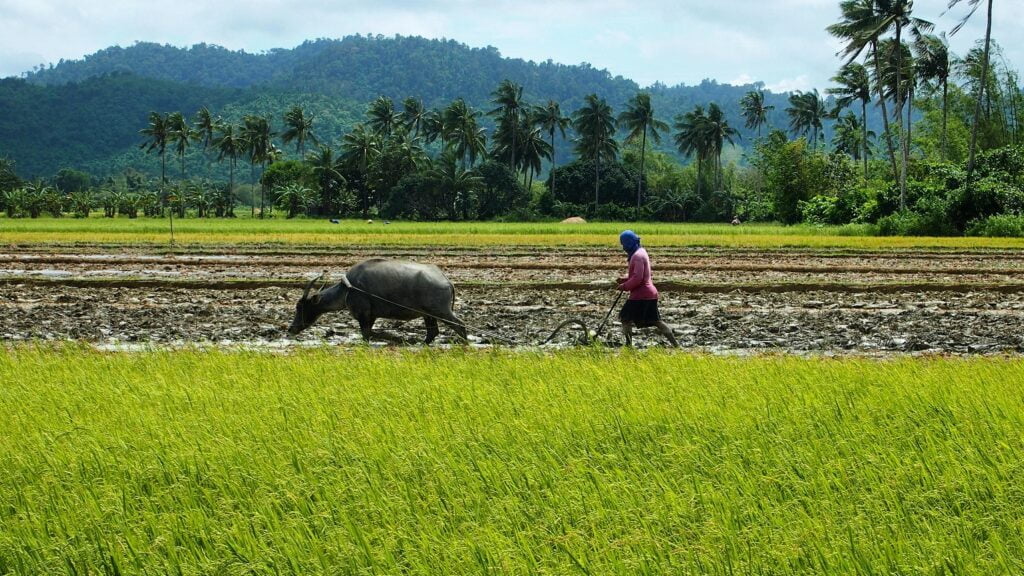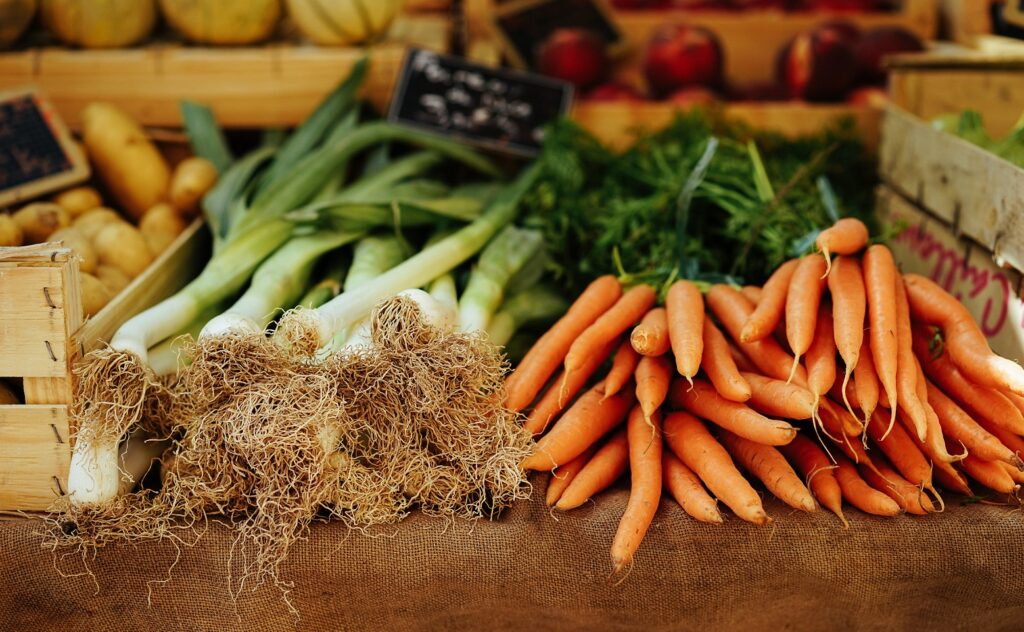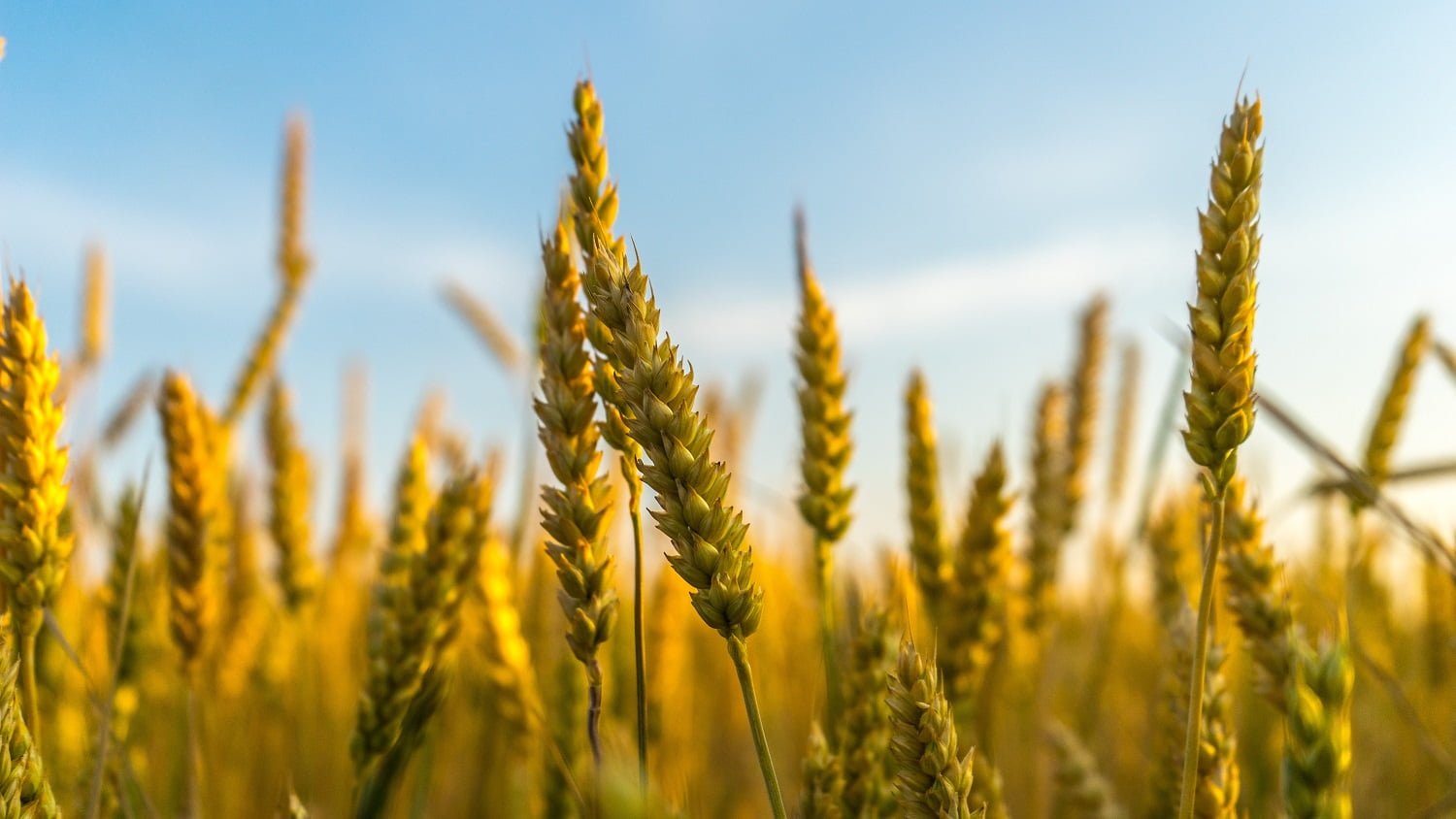Agriculture in the Philippines is a crucial sector that significantly contributes to the nation’s economy and food security.
With a favorable climate and fertile soil, the country sustains a diverse range of crops.
In this post, we will provide a brief overview of agriculture in the Philippines, highlighting the importance of crops in the country’s economy and food security.
We will also explore the 10 most common crops in the Philippines, showcasing their significance and contribution to the nation’s agricultural sector.
Brief Overview of Agriculture in the Philippines

A. Importance of Agriculture
Agriculture is a vital sector in the Philippines, employing millions of farmers and contributing significantly to the country’s economy. It provides food for the population, raw materials for industries, and livelihood opportunities for rural communities.
B. Agricultural Practices
The Philippines practices a mix of traditional and modern farming techniques. Small-scale subsistence farming is common, alongside larger commercial farms.
The use of technology, such as mechanization and improved farming practices, is gradually being adopted to enhance productivity.
C. Agricultural Challenges
Despite its agricultural potential, the Philippines faces challenges such as land degradation, climate change, and limited access to resources and technology.
Efforts are being made to address these challenges through sustainable farming practices and government support.
Importance of Crops in the Country’s Economy and Food Security

A. Economic Contribution
Crops play a significant role in the Philippine economy. They contribute to export revenues, provide raw materials for various industries, and generate employment opportunities in rural areas.
The cultivation and processing of crops create value-added products and contribute to the country’s Gross Domestic Product (GDP).
B. Food Security
Crops are the backbone of the nation’s food security. They provide the population with essential nutrients and fulfill dietary needs.
Staple crops like rice, corn, and cassava form the foundation of the Filipino diet, ensuring food availability and affordability. Diversification of crops, including fruits and vegetables, helps promote a balanced and nutritious diet.
The Most Common Crops in the Philippines and their Scientific Names
Top 1: Rice (Oryza sativa)
Rice, scientifically known as Oryza sativa, is the most important staple crop in the Philippines. It is a major component of the Filipino diet and plays a crucial role in ensuring food security.
Rice holds a prominent position as the staple food in the Philippines, making it the most essential crop in the country. Rice cultivation is widespread, and the Philippines has made significant progress towards achieving self-sufficiency in rice production.
Rice terraces, particularly in the Cordillera region and Ifugao province, showcase the intricate agricultural engineering and cultural heritage associated with rice farming.
Various rice varieties are grown, including aromatic and glutinous rice, to cater to diverse culinary preferences.
Top 2: Coconut (Cocos nucifera)
Coconut, scientifically known as Cocos nucifera, is widely cultivated in the Philippines. It is known for its versatile uses, providing not only food products but also raw materials for various industries such as oil, fibers, and building materials.
The coconut tree, often called the “Tree of Life,” is an iconic crop in the Philippines. Coconut plantations can be found throughout the country, especially in coastal regions.
The versatility of coconuts is astounding, as every part of the tree is utilized. The coconut fruit provides nutritious meat and refreshing water, while the coconut husk is a source of fiber for various industries.
Coconut oil, milk, flour, and other value-added products have gained popularity both locally and internationally.
Top 3: Bananas (Musa spp.)
Bananas, belonging to the Musa genus, are among the most common and widely consumed fruits in the Philippines. They come in various varieties and play a significant role in local cuisine and export markets.
Bananas are widely cultivated in the Philippines, both for domestic consumption and export. The country boasts a rich diversity of banana varieties, including the popular Cavendish, Lakatan, and Saba bananas.
The tropical climate and fertile soil provide favorable conditions for banana plantations. The Philippines ranks among the top banana-producing countries globally.
Regions such as Mindanao, particularly the provinces of Davao, Bukidnon, and Cotabato, are renowned for their extensive banana plantations.
Top 4: Pineapple (Ananas comosus)
Pineapple, scientifically known as Ananas comosus, is a popular tropical fruit cultivated in the Philippines. Known for its sweet and tangy flavor, it is not only enjoyed fresh but also used in various culinary applications and processed products.
Pineapple cultivation thrives in the Philippines due to the country’s tropical climate and rich soil. The province of Bukidnon, in particular, is known for its vast pineapple plantations.
The Philippines produces both the smooth Cayenne pineapple and the smaller, sweeter Formosa pineapple. Pineapples are not only enjoyed fresh but are also processed into juice, canned slices, jams, and other value-added products.
Filipino pineapples are known for their tangy-sweet flavor and vibrant golden color.
Top 5: Sugarcane (Saccharum officinarum)
Sugarcane, scientifically known as Saccharum officinarum, is a vital crop in the Philippines’ agricultural sector. It is primarily grown for sugar production, which contributes to the country’s sweetener needs and export market.
Sugarcane has a long history in the Philippines and is an essential cash crop. The country’s sugar industry contributes to the production of sugar and various by-products such as molasses, ethanol, and bioenergy.
The provinces of Negros Occidental, Tarlac, and Pampanga are major sugarcane-producing regions.
Sugarcane plays a significant role in the country’s economy, providing livelihood opportunities for thousands of farmers and supporting related industries.
Top 6: Corn (Zea mays)
Corn, scientifically known as Zea mays, is an important cereal crop in the Philippines. It is utilized both as a staple food and as feed for livestock, making it crucial for both human consumption and the animal agriculture industry.
Corn, also known as maize, is a widely cultivated crop in the Philippines. It serves as a staple food for many Filipinos and is also a vital source of animal feed.
Corn production is concentrated in various regions, with the provinces of Isabela, Cagayan Valley, and Central Luzon being prominent corn-growing areas. Corn is versatile and used in various forms, including fresh corn on the cob, cornmeal, cornstarch, and corn oil.
It is also an essential ingredient in local delicacies like bibingka (rice cake) and kakanin (traditional rice-based desserts).
Top 7: Mangoes (Mangifera indica)
Mangoes, scientifically known as Mangifera indica, are widely grown in the Philippines and are considered the national fruit. They are known for their sweet and juicy flavor, making them a favorite among locals and a sought-after export product.
Mangoes hold a special place in the hearts and taste buds of Filipinos. The Philippines is renowned for its delicious and flavorful mangoes, often referred to as the “King of Fruits.”
The country produces a wide variety of mangoes, including the Carabao mango, Pico mango, and Indian mango. Mangoes are grown in various regions, such as Guimaras, Zambales, and Pangasinan.
The sweet and juicy mangoes are consumed fresh, used in desserts, and processed into dried mangoes, jams, and purees.
Top 8: Coffee (Coffea spp.)
Coffee, belonging to the Coffea genus, is a notable crop in the Philippines. Both Robusta (Coffea canephora) and Arabica (Coffea arabica) varieties are cultivated, contributing to the country’s coffee production and the growing specialty coffee market.
Coffee production in the Philippines has a long and storied history. The country is known for growing both Robusta and Arabica coffee varieties.
The highlands of Benguet, Cavite, and Batangas are renowned coffee-growing regions. Philippine coffee is gaining recognition in the global specialty coffee market due to its unique flavor profiles and distinctive characteristics.
Coffee farms in the Philippines offer picturesque landscapes, attracting tourists and coffee enthusiasts who enjoy learning about the coffee-growing process.
Top 9: Pine Nuts (Canarium ovatum)
Pine nuts, scientifically known as Canarium ovatum, are native to the Philippines and are highly valued for their unique flavor and nutritional benefits. They are commonly used as a snack and in various culinary preparations.
Pine nuts, also known as pili nuts, are native to the Philippines and are highly valued for their taste and nutritional benefits. Pili trees grow predominantly in the Bicol region, particularly in provinces like Camarines Sur and Sorsogon.
Pili nuts have a rich buttery flavor and are consumed as a snack, used in baking, and processed into oil, candies, and confections.
The popularity of pili nuts is growing, both locally and internationally, as they are recognized for their unique taste and potential health benefits.
Top 10: Cassava (Manihot esculenta)
Cassava, scientifically known as Manihot esculenta, is a versatile root crop widely grown throughout the Philippines. It serves as a staple food in many rural areas and is processed into products such as flour, chips, and tapioca pearls.
Cassava, locally known as kamoteng kahoy, is a versatile crop widely grown throughout the Philippines. It is a staple food in many rural areas, particularly in Visayas and Mindanao, where it provides a reliable source of carbohydrates.
Cassava is processed into various products such as cassava flour, tapioca pearls, and chips. The plant’s resilient nature makes it suitable for cultivation even in less fertile and drought-prone regions.
Nurturing the Future of Philippine Agriculture With Crops
The Philippines’ agricultural landscape is enriched by a wide array of common crops that contribute to the country’s economy, food security, and cultural heritage.
Rice, coconut, bananas, pineapple, sugarcane, corn, mangoes, coffee, pine nuts, and cassava are among the most prevalent crops, reflecting the diversity and richness of Philippine agriculture.
These crops not only provide sustenance but also drive rural development, create employment opportunities, and showcase the country’s agricultural potential.
Through continued support for farmers and sustainable farming practices, the Philippines can ensure a vibrant and resilient agricultural sector for years to come.
Also Read: Aratiles Tree Benefits And Fascinating Facts About It
Well, what do you think about the article?
Did you enjoy reading “10 Most Common Crops in the Philippines: A Comprehensive Overview“? We really hope that you have enjoyed this common crops 101. If you have any thoughts or comments about this post, please feel free to share them in the comment section below. We appreciate your feedback and would be glad to hear from you.
To see more content like this check the gardening section of Money For My Beer.

Chief Editor and Website Owner.
Hey, I’m Ryan, a software guy and the owner of Money For My Beer. I’m the one making sure all our posts on the site are awesome.
I usually handle tech stuff that might not be super interesting to everyone, like programming enterprise software, apps, games, and websites. Cool stuff, right? I also help clients with SEO and sometimes create games.

